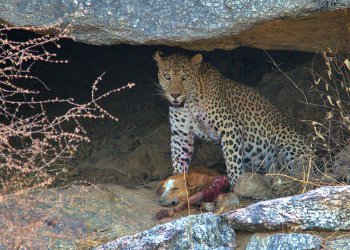One of the most frequently told stories about invasive species on islands or on the effect of cats on biodiversity is the tale of Tibble and Stephens Island Wren.
In a few words and following a common version, Tibble was the cat and only companion of the light-house keeper on Stephens Island and it's supposed to be the sole responsible of the extinction of the one flightless passerine, the local endemic Xenicus (Traversia) lyalli in 1894.
The story is easy to tell and remember: a villain, a victim and a moral (no hero, this time), but, in fact, as usual, reality is a bit more complex.
First, this is not the only known flightless passerine, but they were few of them, maybe just four (all of them extinct and all except one were New Zealand's wrens). This is the only that was still extant when known for science.
|
|
| Extinct bird Xenicus lyalli (Xenicidae), male (lower) & female (upper). From Buller, Walter Lawry, A History of the Birds of New Zealand. Supplementary Notes to the 'Birds of New Zealand'. Vol. II.. 1905. |
The story is easy to tell and remember: a villain, a victim and a moral (no hero, this time), but, in fact, as usual, reality is a bit more complex.
First, this is not the only known flightless passerine, but they were few of them, maybe just four (all of them extinct and all except one were New Zealand's wrens). This is the only that was still extant when known for science.
Second, the species was not endemic from Stephens Island, as the English name suggests, but relict to the island where it survives in recent times, although it is common in fossil deposits from both of the main islands before the arrival of maoris with kiores (Worthy and Holdaway 1994).
Third, Lyall was not the light only human inhabitant of the island, neither the lighthouse keeper. He was the assistant and there were other people living there.
Fourth, and most important: how many "tibbles" where there? The first record of a single cat being responsible of the extinction is due, apparently, to Rothschild (1905).
Third, Lyall was not the light only human inhabitant of the island, neither the lighthouse keeper. He was the assistant and there were other people living there.
Fourth, and most important: how many "tibbles" where there? The first record of a single cat being responsible of the extinction is due, apparently, to Rothschild (1905).
 |
| Image from http://www.terranature.org/wren.htm |
Fifth, the species didn't disappeared in 1884. following the same authors, extinction of the wren was more extended than generally stated: 10 specimens were evidently brought in by a cat in 1894, but another two-four were obtained in 1895, and two-three more after that and possibly as late as 1899. Fifteen of these specimens are still held in museums.
Last, but not least, the simplified story forgets some other victims because cats were responsible for several more extinctions on Stephens island. Medway (2004) explains how Stephens Island provides the classic example in the New Zealand region of the effect that predation by feral cats (Felis catus) can have on an island land bird fauna. Twenty-five species of native New Zealand land birds were recorded on the island in the early 1890s when it was still forested and free of mammalian predators. It is probable that Stephens Island still had its original land bird fauna at that time. The land bird species included large populations of the extinct Stephens Island piopio (Turnagra capensis minor), and the endangered South Island saddleback (Philesturnus c. carunculatus).
Cats were introduced to Stephens Island probably in 1894. They soon became feral and multiplied rapidly. The evidence indicates that cats were responsible for the rapid demise of the native land bird fauna of the island.
References
- Galbreath, R. & Brown, D. (2004): The tale of the lighthouse-keeper's cat: Discovery and extinction of the Stephens Island wren (Traversia lyalli). Notornis 51(4): 193–200.
- Medway, D.G. (2004): The land bird fauna of Stephens Island, New Zealand in the early 1890s, and the cause of its demise. Notornis 51(4): 201–211.
- Rothschild, W. (1905): On extinct and vanishing birds. Proceedings of the 4th International Ornithological Congress, London: 191-217.






